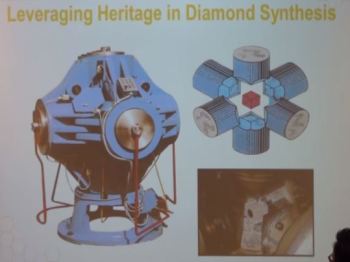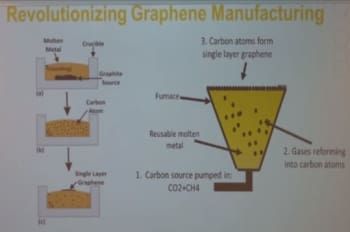Mass-Volume Graphene Production, A Moonshot Project
Michael Sung wants to tackle the problem of carbon emissions. Through the Electric Vehicle Challenge he hopes to develop vehicles that emit less carbon. Sung says that batteries need to have more range and slower charging times. His solution is take waste gas emissions and transform them into a usable fuel base for electric vehicles.
Sung’s talk Mass-Volume Graphene Production Using Waste Carbon outlines his techniques for producing graphene and possible future uses for the technology. Graphene, Sung says, can double a battery’s capacity and requires only a tenth of the charge time of a traditional battery. Graphene might also be used in desalinating water, and creating strong but light structural materials.

Michael Sung on Mass-Volume Graphene Production at We Solve for X Beijing
The three current graphene production methods are discussed, and then Sung says his process hopes to be able to create one thousand times more yield at one thousandth the cost. This seems like a ridiculously wild boast, but Sung then outlines his process and the ways that he might be able to hit those goals.
Sung and his team use a cubic press and a process similar to synthetic diamond production to collect graphene. A mix of nickel and iron powder is mixed into a solvent, and a graphite source is melted in the solvent and recollect onto a diamond seed.
Sung’s process takes a vacuum furnace and introduces his metal solvent and a high purity graphite source. The process melts off the carbon from the graphite source and the graphene layers float to the top of the furnace. The process should be scalable – Sung likens the scaling to a person melting salt in a small cup of water and then melting more salt in a large cauldron.
This talk really punctuates the benefit that high quality graphics can give to a Solve for X talk – the camera is only focused on Michael Sung and he is projecting images on the screen that would presumably help to convey his ideas and processes. There’sanother talk online from Sung that gives a slightly different perspective of the process with better graphics but lower sound quality.
Producing graphene using this method is a long term solution, and Sung and his team have been working on graphene production since 2006 (the Nobel Prize for smaller scale graphene production was awarded in 2010 for work done much earlier.) Michael Sung has a great mix of experience from his father’s synthetic diamond company, the MIT Media Lab, and his current post at the Hong Kong University of Science and Technology.





